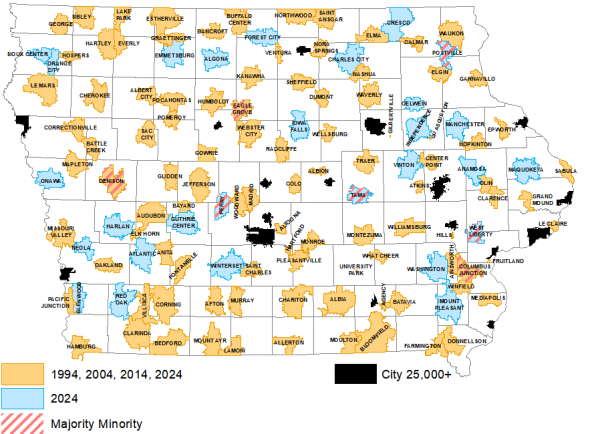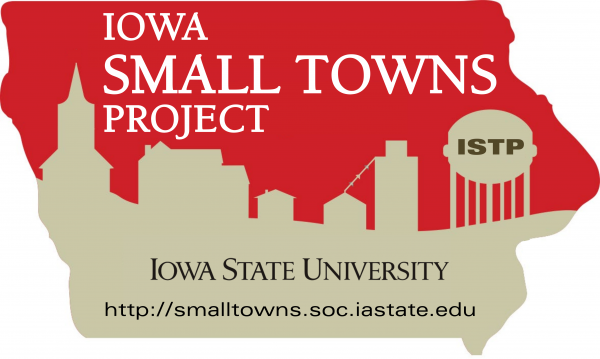Methodology
The ISTP is a longitudinal trend study that follows the same communities over time, but with different participants in each wave. For the 1994, 2004, and 2014 waves a two-stage sampling design was used. The town sample in 1994 randomly selected one small town in each of Iowa’s 99 counties. The sampling frame in each county consisted of all municipalities with populations between 500 and 10,000 people that were not adjacent to a metropolitan city of 50,000 or more, based on the 1990 Census. The household sample randomly selected 150 housing units in the ZIP postal code area for each of the 99 towns.
In the 2024 wave there were changes to the sampling strategy. For the town sample, we included the original 99 towns plus 26 additional towns. We included 24 regional trade centers located in non-metropolitan and non-micropolitan counties based on 2021 CBSAs. We randomly sampled regional trades centers across four population groups: 8 towns between 2,000-3,999; 8 towns between 4,000-5,999; 6 towns between 6,000-7,999; and 2 towns between 8,000-9,999. We also include two replacement towns because: one town was severely inundated by the Missouri River flood in 2019, resulting in a population loss of 75%; and one 2004 Sigma town was mistakenly dropped from the 2014 wave, resulting in a time series break. For the household sample, randomly selected the larger of 200 or 15% of occupied housing units (based on 2020 Census) in each of the 125 towns. To ensure representativeness, we draw a random persons of color oversample in 11 towns where people of color account for 20% or more of the population. We recognize the likely low response to mail surveys in 6 meatpacking communities where persons of color exceeded 45% of the population. To address this, we worked with trusted local partners to conduct non-probability purposive samples in each community.

 The Iowa Small Towns Project is an integrated research and extension effort to better understand the conditions and issues facing small Midwestern communities in the 21st century. Using data from small towns that has been continuously collected since 1994, the project: (i) produces academic papers to further our research mission, and (ii) develops and delivers community outreach materials to further our extension mission. To our knowledge, no other project examines aspects of community life for such a large number of small towns over two decades. This allows us to provide truly unique insights into the changes occurring in small towns across Iowa and the Midwest.
The Iowa Small Towns Project is an integrated research and extension effort to better understand the conditions and issues facing small Midwestern communities in the 21st century. Using data from small towns that has been continuously collected since 1994, the project: (i) produces academic papers to further our research mission, and (ii) develops and delivers community outreach materials to further our extension mission. To our knowledge, no other project examines aspects of community life for such a large number of small towns over two decades. This allows us to provide truly unique insights into the changes occurring in small towns across Iowa and the Midwest.
